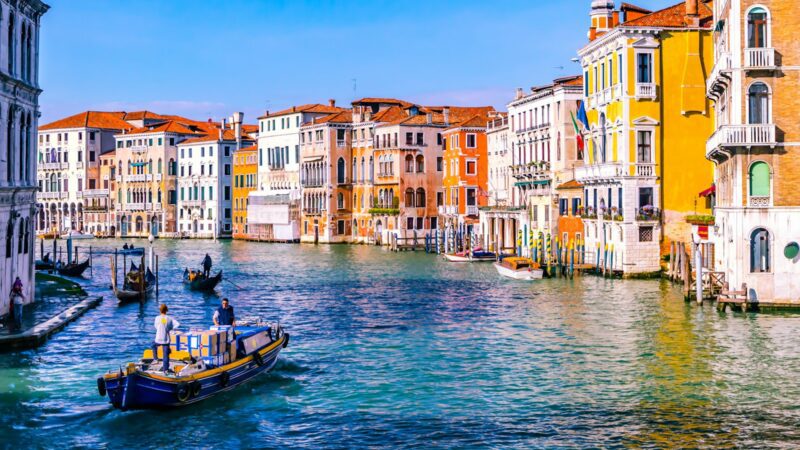In a world where preserving the environment is growing in importance, eco-friendly travel is no longer just a trend, but a necessity. As responsible globetrotters, we must consider the impact of our actions on the places we visit, the people we meet, and the planet as a whole. By embracing eco-friendly travel practices, we can help preserve the Earth’s natural resources and cultural heritage for future generations to enjoy.
Understanding eco-friendly travel means recognizing that our everyday actions and choices can make a significant difference. From selecting sustainable destinations to reducing our carbon footprint, we can work towards a more responsible and environmentally friendly way of touring the world. This includes considering green accommodations, supporting the local economy and wildlife, engaging in ethical tourist activities, and being mindful of our packing and travel gear.
Table of Contents
ToggleKey Takeaways
- Embracing eco-friendly travel practices is crucial for preserving Earth’s natural resources and cultural heritage.
- Making mindful choices, including selecting green accommodations and supporting local economies, can contribute to a more responsible travel experience.
- Reducing our carbon footprint, minimizing plastic consumption, and engaging in ethical activities help ensure a positive impact on the environment while traveling.
Understanding Eco-Friendly Travel
Eco-friendly travel, also known as green or sustainable travel, is about making conscious choices to reduce the negative impact of our journeys on the environment. As responsible travelers, we must strive to minimize our carbon footprint, conserve natural resources, and contribute positively to the communities we visit. In the wake of climate change and overtourism, exploring the world with minimal harm to the planet has never been more crucial.
Emissions
One significant aspect of eco-friendly travel is understanding emissions and their impact on the environment. Air travel, for example, is a major contributor to greenhouse gases, making it necessary to be mindful of our choices when flying. Opting for non-stop flights can help reduce CO2 emissions as takeoffs and landings cause the highest fuel consumption. Although air travel is often unavoidable, we can still strive to support sustainable airlines and offset our emissions by investing in renewable energy projects or carbon credits.
Destinations
Another essential component of environmentally friendly travel is choosing sustainable destinations. This means considering places with established conservation efforts, responsible use of natural resources, and a commitment to social welfare. The Global Sustainable Tourism Council, for example, recognizes destinations that effectively address environmental, social, and economic sustainability, making them more appealing to eco-conscious travelers.
Conservation efforts, such as visiting national parks and protected areas, can also make a significant positive impact. By paying entrance fees and supporting local businesses, we contribute to the preservation of ecosystems and the well-being of the communities that rely on them. Moreover, engaging in eco-friendly travel allows us to promote renewable energy use and discourage harmful practices like greenwashing.
Social Impact
To be a genuinely eco-friendly traveler, we must also be aware of the social impact of our actions. This includes respecting local cultures, customs, and traditions, as well as ensuring that our visit helps communities thrive rather than depleting them. Avoiding overtourism and supporting local businesses can greatly benefit the places we visit, leaving a long-lasting, positive impact on both the environment and the people who call it home.
In conclusion, understanding eco-friendly travel is about recognizing the complex interplay between emissions, sustainable practices, and the impacts of our actions on our planet. By making thoughtful choices and embracing a lifestyle of conservation and responsibility, we can explore the world while preserving its beauty and resources for future generations.
Choosing Eco-Friendly Travel Destinations
When planning an eco-friendly trip, the first step is selecting a sustainable destination. Sweden is a great example of a country committed to environmental practices, with initiatives such as recycling programs and a focus on renewable energy. As a traveler, you can enjoy the beautiful Swedish countryside and immerse yourself in the green-oriented culture. Make sure to visit some of the country’s beautiful national parks, such as Abisko NP and Sarek NP, to appreciate the untouched natural surroundings.
Another excellent sustainable destination is Slovenia, often referred to as the green heart of Europe. Slovenia is known for its commitment to maintaining a healthy balance between tourism and the environment. This gem of a country boasts stunning landscapes and diverse ecosystems, with many protected areas and numerous sustainable activities to try, such as hiking, cycling, and bird-watching. Slovenians have a deep respect for their land and their culture, which is evident to any visitor.
Portugal also stands out as an eco-friendly destination with multiple options for sustainable accommodations and travel experiences. The country has made significant strides in transitioning towards renewable energies and promoting responsible tourism. When visiting Portugal, make time to explore its beautiful coastline, dine on farm-to-table cuisine, and embrace the local culture. This is a destination where you can enjoy an environmentally-friendly trip without compromising your experience.
While certain destinations like Venice may face overtourism, it is still possible to enjoy these locations with an eco-conscious approach. By choosing to visit during the off-season, opting for local accommodations, and supporting local businesses, you can make a smaller impact on the environment and local culture. Additionally, consider exploring lesser-known areas within popular destinations, which can offer unique experiences and fewer crowds, while still being immersed in the essence of the place.
Check out our Travel Guide to Venice in this post
Finally, don’t forget about national parks as sustainable travel options. These protected areas serve to conserve wildlife, ecosystems, and cultural heritage. When visiting national parks, be sure to follow Leave No Trace principles, respect the wildlife, and support local businesses. This can be a rewarding way to reconnect with nature and discover the beauty and importance of our planet’s diverse landscapes.
With these sustainable destinations in mind, you’re well on your way to planning an eco-friendly trip. Remember, as a traveler, you have the power to make a difference. By choosing responsibly, you are contributing to the preservation of our world’s natural and cultural wonders for future generations to enjoy.
Reducing Carbon Footprint During Eco-Friendly Travel
Eco-friendly travel is more important than ever, as the earth’s environment continues to change. Reducing your carbon footprint while traveling doesn’t have to be difficult or overwhelming. By making a few simple adjustments, you can positively impact the planet while enjoying your adventures.
Flights
When planning a trip that requires flying, consider taking a non-stop flight to minimize your CO2 emissions. Shorter, more frequent flights generate more carbon emissions, as takeoffs and landings create a significant amount of CO2. By taking a direct route, you can help limit your impact on the environment.
Public Transportation Options
One key aspect to consider is transportation. Choosing public transport over private vehicles can greatly reduce your carbon emissions. Buses, trains, and subways tend to use less fuel per passenger, ensuring lower emissions overall. Additionally, opting to walk or bike when possible not only cuts fuel consumption, but also provides an opportunity to explore your destination in a more immersive way.
Driving tips
When embarking on a road trip, make sure to properly maintain your vehicle. Ensuring that your tires are properly inflated, your engine is tuned, and your filters are clean can all contribute to a lower carbon footprint. Driving at a consistent and moderate speed also helps reduce fuel consumption and emissions.
Hotels
Lastly, consider staying at eco-friendly hotels while you’re on your journey. These establishments are dedicated to reducing their carbon footprint, often by using energy-saving practices, renewable resources, and implementing recycling programs. Supporting these businesses allows you to contribute to a more sustainable future while enjoying a comfortable stay. We’ll delve more into this subject below
By keeping these tips in mind, you can actively reduce your carbon footprint while traveling, ultimately making a positive impact on the environment. Remember, it’s the small steps we take that create lasting change, so let’s all strive to be eco-friendly travelers together.
A Deeper Look at Eco-Friendly Travel Accommodations
When planning your eco-friendly trip, choosing sustainable accommodations is an essential part of reducing your carbon footprint and supporting environmentally responsible practices. There are several options for green accommodations available to the conscious traveler.
One popular choice is Airbnb, which allows you to stay in private homes, apartments, and other unique lodgings, often owned by locals. Staying in Airbnb accommodations not only gives you a more authentic travel experience but may also encourage responsible tourism by supporting local economies.
Another alternative for eco-friendly travelers is staying in homestays. A homestay is when you stay with a local family in their own home, allowing you to immerse yourself in the culture and traditions of your destination. Homestays can have a smaller environmental impact since they use existing living spaces and facilities rather than constructing new buildings for tourism purposes.
What to Look For
For those who prefer hotels, look for establishments with recognized green credentials, such as LEED certification or those listed on eco-friendly booking platforms like booking.com and bookdifferent.com. These certifications indicate that the property has implemented sustainability measures, such as energy-efficient lighting and appliances, waste reduction, and supporting local communities.
In addition to these options, there are also eco-friendly accommodation directories, like Ecobnb, which specifically list sustainable and green places to stay. These platforms allow you to find accommodations that prioritize environmentally friendly practices, from small bed and breakfasts to luxury hotels.
Whichever option you choose, remember to be a conscientious guest by conserving resources, recycling when possible, and respecting local customs and the environment around your accommodation. By doing so, you are not only enjoying your vacation but also contributing to a more eco-friendly travel experience for everyone.
Check out this post 14 of the most ethical zoos in the US
Eco-Friendly Travel Tourism Practices
One of the chief goals of being an eco-friendly traveler is adopting eco-friendly travel practices. These practices consider not just the environment but also the local culture, heritage, and economy of the destination. By following the Global Sustainable Tourism Council’s guidelines, travelers can contribute to the betterment of the communities they visit while minimizing their environmental impact.
Invest in the Community
When planning a trip, choosing sustainable travel experiences should be a priority. Opting for locally-owned accommodations and restaurants allows tourists to invest in the community’s well-being. By prioritizing businesses that have environmentally friendly practices in place, such as reducing waste and saving energy, travelers can make a positive impact on the local ecosystem.
Part of being a responsible traveler involves engaging with the local culture and people on a deeper level. This means respecting traditions, customs, and visiting heritage sites with a mindful attitude. In addition, choosing tours and activities that promote cultural understanding and conservation can help enrich the travel experience.
A key aspect of eco-friendly travel involves supporting the local economy. Tourists can contribute to this by purchasing locally-made products, dining at locally-owned restaurants, and using local guides and services. This also results in a more authentic and enriching travel experience.
Conserve Natural Resources
Another important factor in sustainable travel is the conservation of natural resources. This can be achieved by participating in eco-adventures or conservation initiatives and opting for activities that minimize harm to the natural surroundings. Being mindful of one’s ecological footprint, such as reducing plastic waste and conserving water, can also greatly enhance the sustainability of a trip.
By integrating these eco-friendly travel practices while traveling, individuals can enjoy unique local experiences and contribute positively to the communities and ecosystems they visit. Making conscious decisions with the environment, local cultures, and economy in mind not only makes travel more fulfilling but helps preserve the beauty and authenticity of destinations for future generations to appreciate.
Reducing Plastic Consumption
When embarking on your eco-friendly travels, one of the most effective methods to minimize your environmental impact is to reduce plastic consumption. With a few conscious decisions and mindful practices, you can easily lower your plastic footprint while exploring the world.
Before heading out, pack toiletries in reusable containers, and consider investing in biodegradable products such as shampoo bars or biodegradable soap. These small switches not only help you in avoiding single-use plastic bottles but also reduce litter in the pristine destinations you visit.
Reusable Water Bottles
Another important change to make in your travel routine is to carry a sturdy reusable water bottle. By filling up your bottle at water stations or trusted sources, you can eliminate the need for plastic water bottles. Plus, you’ll stay properly hydrated throughout your journey without contributing to plastic waste. In many countries, you can find water refilling stations specifically for travelers to minimize their plastic consumption.
Apart from water bottles, plastic straws are a common source of pollution. To combat this issue, either refuse straws when you order drinks or choose to carry your own reusable straw made from materials like stainless steel or bamboo. You can easily clean them on the go and enjoy your beverage guilt-free.
In addition to straws, another ubiquitous source of plastic waste is plastic bags. By packing a few reusable shopping bags in your suitcase, you can easily avoid contributing to plastic pollution when making purchases during your travels. Additionally, use reusable food containers or beeswax wraps to store snacks and leftovers while reducing the number of plastic bags and disposable containers.
Finally, it’s essential to remember that disposing of plastic waste responsibly has a significant impact. Properly recycle any unavoidable plastic items, and don’t leave anything behind at the places you visit.
By incorporating these eco-friendly travel products and practices into your travel routine, you’ll not only protect the planet but also improve your overall travel experience. Always remember, that the more we reduce our plastic consumption, the brighter and cleaner our world will be for future generations to explore.
Caring for Wildlife and the Environment
One of the most important aspects of being an eco-friendly traveler is caring for wildlife and the environment. This not only helps protect our planet’s natural beauty but also ensures that future generations can enjoy these wonders too. Here are a few ways you can do your part while traveling.
Wildlife
Respecting wildlife is an essential part of being an eco-conscious traveler. This means observing animals from a safe distance and avoiding any activities that might disturb or harm them. If you’re hiking or visiting national parks, stick to designated trails to minimize your impact on their habitats. Remember, leaving wildlife undisturbed is essential for their well-being and conservation efforts.
Landscapes
No one likes seeing trash in picturesque landscapes. As a responsible traveler, always make sure to pack out what you pack in. This helps reduce pollution and maintain the pristine beauty of the places you visit. Bring along a reusable bag for your trash and dispose of it properly once you’ve returned to civilization. Reducing waste is one way to make our planet a happier, healthier place.
When visiting parks or protected areas, follow all rules and guidelines provided by park authorities. This might include staying on marked trails, keeping noise levels down, and respecting fragile ecosystems. Abiding by these rules helps support conservation efforts, keeping these precious areas in good condition for future generations to enjoy.
Packing and Travel Gear
Packing light and smart is an essential aspect of being an eco-friendly traveler. Making small changes to the products we use and how we pack them can go a long way in reducing our environmental impact. So, what does an eco-friendly packing list look like? Let’s find out.
Firstly, invest in sustainable luggage made from recycled materials or natural fibers. These types of suitcases or backpacks are not only functional but also environmentally responsible. You’ll be making a positive impact even before you start packing!
The next step is to reduce the use of single-use plastics. Bringing a reusable water bottle is a game-changer. Fill it up at safe drinking water points so you won’t need to buy disposable bottles. Plus, many airports and tourist spots have refill stations, making staying hydrated a breeze.
In addition to water bottles, use reusable containers for your toiletries. Opt for eco-friendly travel products such as solid lotion bars, shampoo bars, and conditioner bars that come in recyclable or reusable packaging. You can also use eco-friendly silicone squeeze tubes for toothpaste, facial cleanser, and other liquids or gels.
Ditch those plastic grocery bags and grab some stylish tote bags. A sturdy tote bag is versatile, perfect for carrying groceries, beach essentials, and even impromptu shopping sprees. They are easy to pack, light in weight, and washable, which means you’ll save both money and the environment.
Here is a list of a few more eco-friendly travel gear ideas:
- Reusable silicone food bags for snacks
- Solar-powered charger for your gadgets
- Biodegradable wet wipes or a compact microfiber towel
- Cutlery set made of bamboo or other sustainable materials
- Cloth produce bags for buying fruits and vegetables at local markets
By making mindful choices about what we pack and how we pack it, we can become more eco-conscious travelers. Remember that every small change can make a significant impact; together, we can travel greener and contribute to a more sustainable world.
Eco-Friendly Travel Conclusion
Being a responsible and eco-friendly traveler is not as difficult as it may seem initially. Small changes in your travel habits can contribute greatly to preserving the planet for future generations. As you embark on your journey, consider choosing sustainable destinations that show commitment to protecting natural resources, people, and heritage.
By planning your trips with care, you can significantly reduce your carbon emissions and minimize your impact on the environment. Opt for greener transportation options, like trains or bikes, when possible, and use public transportation whenever you can. Staying in sustainable lodging is another way to ensure you’re committed to eco-friendly travel.
In addition to supporting local businesses and contributing to the community’s economy, being an eco-friendly traveler involves respecting the local culture. Learn about the customs and traditions of the places you visit and leave a positive impression on the people you meet along the way.
Moreover, finding a balance between creating lifelong memories and maintaining a sustainable travel lifestyle can be achievable even on a budget. By prioritizing eco-friendly choices and understanding the impact of your decisions, you’ll become a more conscious and ethical traveler.
As a responsible tourist, recognize the importance of taking care of our planet, and remember that your actions have lasting consequences. Embrace your role as an eco-friendly traveler, and enjoy your voyages while making a positive contribution to the world. And don’t forget, every sustainable step you take today will pave the way for greener adventures in the future.







![boats docked near seaside promenade]](https://www.versedtraveler.com/wp-content/uploads/2023/11/prb-sjoubfs-800x534.jpg)


















